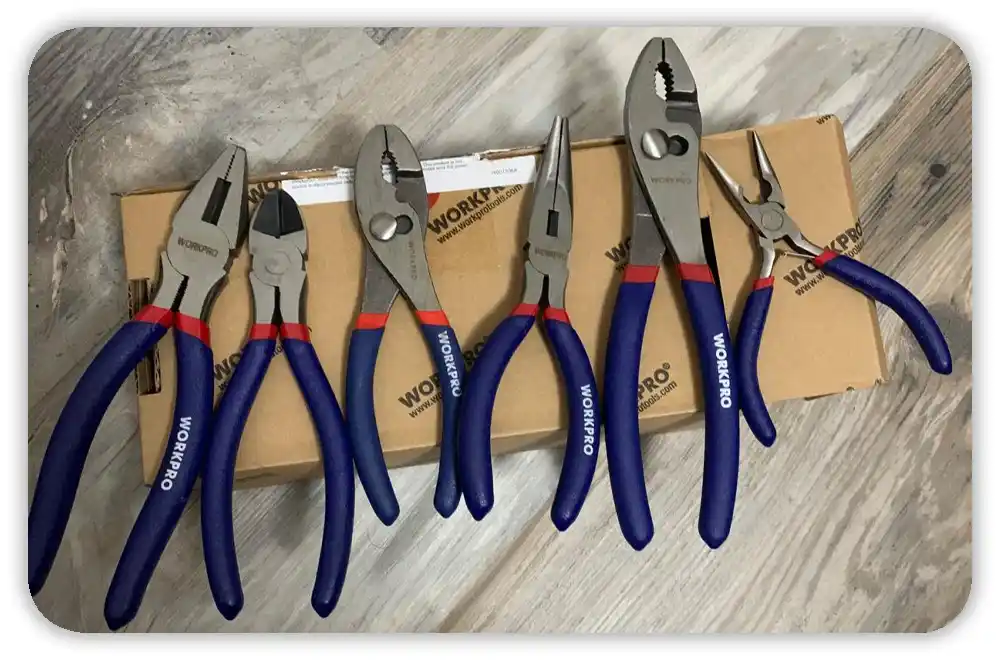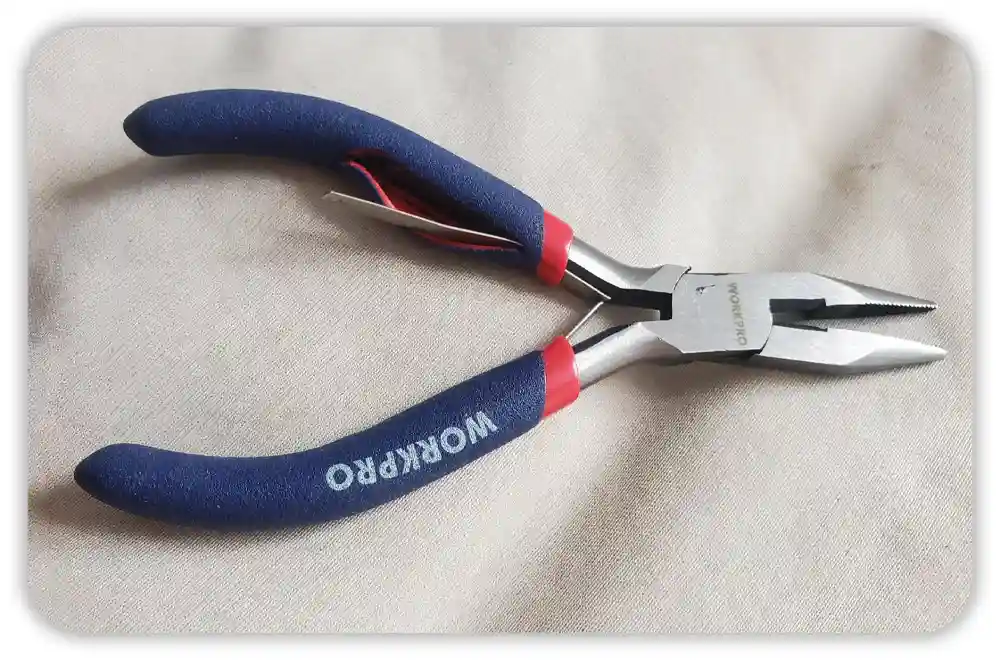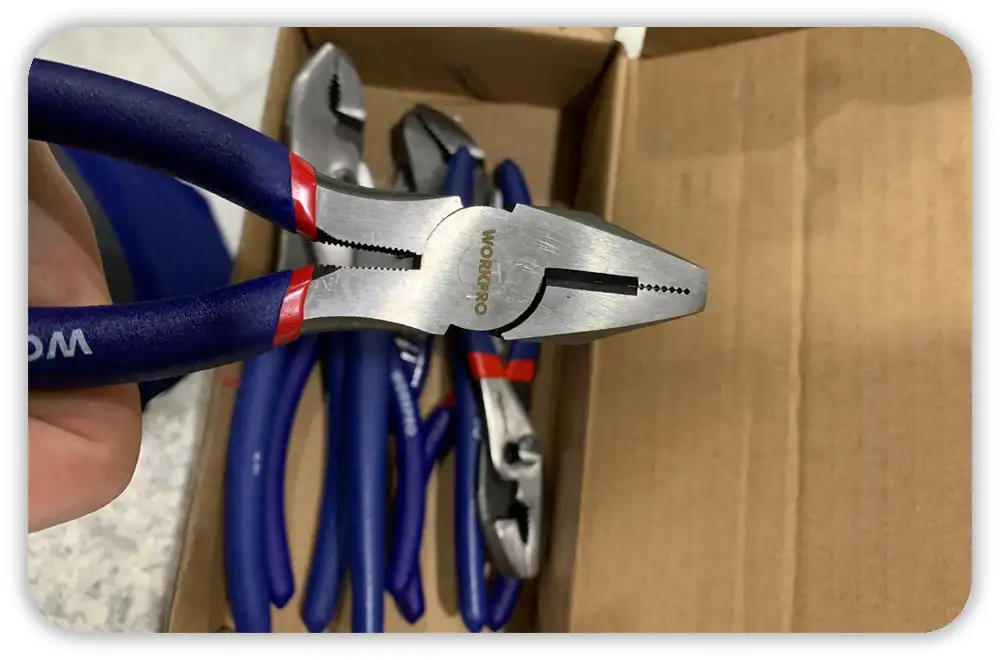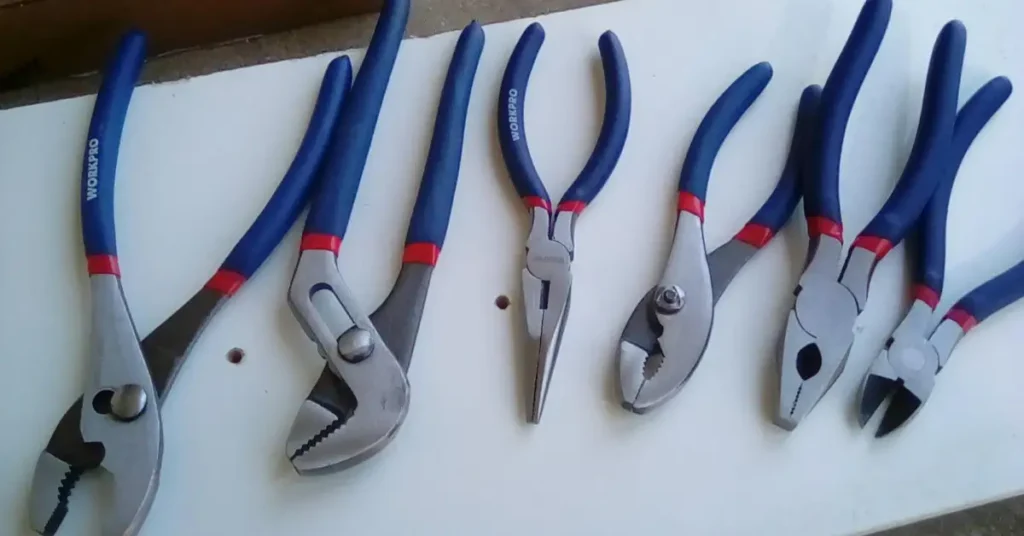I’ve had a few pliers turn orange after a job in a damp garage. It happens faster than you think. One wet day or a sweaty toolbox, and rust shows up. The good part is — you can clean it off and bring your pliers back to life without much trouble.
Table of Contents
Why Rusty Pliers Deserve Your Attention
Rust makes metal weak. It can also hurt grip strength. I once had a pair slip mid-job, and it wasn’t fun.
Even solid tools like DeWalt, Milwaukee, or Craftsman can rust if left in humid garages or job sites. Clean tools work better, last longer, and keep you safe. That lines up with OSHA’s safety and tool care rules, too.
Understanding What Causes Rust on Pliers
It’s easier to stop rust once you know what causes it. Most of the time, it’s moisture and neglect.

Common Causes
I’ve seen rust form from leaving tools in a damp box or not oiling them after use. Salt in the air, condensation, and poor storage are the main culprits — especially in coastal or humid U.S. states.
Types of Rust You Might See
- Surface rust: A light orange film that wipes off fast.
- Scale rust: Thick and flaky, needs some effort.
- Deep rust: Eats into the metal. Once it’s that bad, the pliers might not be safe to use.
Tools and Materials You’ll Need
You don’t need much. Here’s what I keep ready before I start cleaning:
- White vinegar or lemon juice
- Baking soda paste
- Fine steel wool or 400–600 grit sandpaper
- Small brass wire brush
- Gloves and safety glasses
- Shop rags or microfiber cloths
- WD-40, 3-IN-ONE Oil, or similar
- Optional: rust converter spray or tool protectant
Step-by-Step: How to Clean Rusty Pliers
These steps are quick and safe. I’ve used them on both light and heavy rust.

Step 1: Inspect and Secure the Tool
Check for cracks or damage first. If it looks solid, hold it gently in a vise or set it on a mat so it won’t move.
Step 2: Soak in Vinegar or Lemon Juice
Soak rusty parts for 30 minutes to a few hours. Light rust needs less time. You can also rub vinegar on the spots instead of soaking.
Step 3: Scrub Away the Rust
Use steel wool or a brush to remove loose rust. For tougher spots, use baking soda paste and scrub again. Go easy — let the tools do the work.
Step 4: Rinse, Dry, and Polish
Rinse with clean water and dry well. I like to use a hair dryer on low heat to make sure no water stays behind.
Step 5: Lubricate and Protect
Once dry, add a thin coat of oil or WD-40. Move the pliers open and shut a few times so the oil spreads evenly. That keeps new rust from forming.
Alternative Methods for Heavily Rusted Pliers
If the rust is thick, vinegar alone might not cut it. Here’s what I’ve done in those cases.
Mechanical Rust Removal:
Attach a wire wheel to a Dremel or drill. It removes heavy rust fast. Always wear safety glasses and keep good airflow in your workspace.
Electrolysis Cleaning:
This one’s for folks who like experiments. It uses a battery charger, washing soda, and water to lift rust off metal. Many tool restorers swear by it, but you need to follow safety rules closely.
Preventing Rust: Smart Workshop Habits
Once clean, keep your pliers that way. It’s mostly about routine.

Daily and Weekly Tips
Wipe tools after every use. Store them in a dry box or chest. Add silica gel packs or rust inhibitors if you live in a humid place. Tool drawer liners also stop metal-on-metal wear.
Seasonal Maintenance
Before winter, coat your pliers with a bit of oil. In humid states like Florida or Louisiana, I check my tools once a month. Small habits go a long way in keeping rust away.
When to Replace Rusty Pliers
Sometimes the damage is too deep. If rust reaches the pivot or eats into the cutting edges, the tool can fail during use.
When I replace pliers, I go for chrome-vanadium steel or nickel-plated finishes. They handle humidity better and last longer in rough workspaces.
Final Thought
Cleaning rusty pliers isn’t just maintenance — it’s respect for your tools. Keep them dry, oiled, and ready, and they’ll stay loyal for years. Once you make it a habit, it’s as easy as wiping down a countertop after work.
FAQs for How to Clean Rusty Pliers
How do you clean rusty pliers at home?
Soak the pliers in white vinegar or lemon juice for an hour, then scrub with steel wool. Rinse, dry, and coat with oil to stop new rust from forming.
Can WD-40 remove rust from pliers?
Yes. WD-40 helps loosen light rust and adds a protective layer. Spray it on, let it sit for a few minutes, and then wipe the rust away.
What’s the best way to prevent pliers from rusting?
Keep them dry, wipe them after each use, and store them in a clean toolbox. Add silica gel packs or rust inhibitors if you live in a humid area.
Can I use baking soda to clean rusty tools?
You can. Make a paste with water, spread it on the rust, let it sit for 15 minutes, and scrub it off. It’s safe and works well for light rust.
When should I replace rusty pliers?
Replace them if rust has reached the pivot or cutting edges. Deep rust weakens the metal, and using damaged tools can be unsafe.

